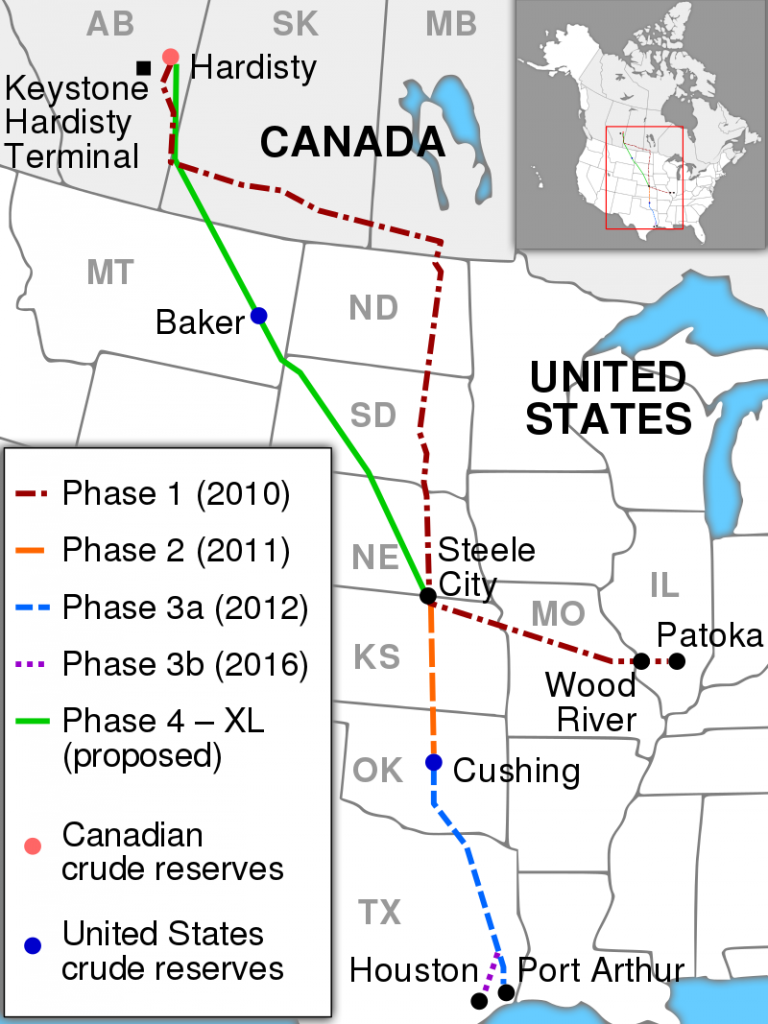
On Dec. 7, 2022, a Keystone pipeline operated by TC Energy burst on account of stress and welding errors, spilling an estimated 588,000 gallons of oil in a creek in Washington, KS. It was the twenty-third spill in total along the Keystone system since the beginning of operations in 2010 and the largest to occur at the time of the spill according to federal data. The spill remains the second largest spill of tar sand crude oil to ever occur on U.S. soil.
TC Energy is based in Calgary, Alberta, Canada. The erupted Keystone pipeline runs from Canada to Texas and Illinois and does not carry conventional oil, but rather a product of the Canadian tar sands called diluted bitumen. The chemical composition of the substance drastically changes when removed from the pipes, allowing it to sink below surface level of the waters in a matter of days. When exposed to air, the diluted bitumen assumes a glue-like consistency. Not only do these qualities make it more difficult to clean or contain the spill, but also harder to detect or retrieve it.
“It’s almost impossible to clean from surfaces,” said Steve Hamilton, a professor at Michigan State University and member of the National Academies of Sciences committee that wrote the 2016 report on diluted bitumen. “We tried hot water sprays and detergent and so on… It’s extremely sticky once it has been exposed to air for a while.”
In just the first few weeks, nearly a hundred animals were reported dead as a result of the spill. Determining the exact rate of death proved difficult, especially after TC Energy established a no-fly zone on December 16th preventing drone footage of the restricted site. The site had already been closed off to lawmakers, the media, and the general public. TC Energy stated that the closure was a necessary safety measure to keep the worksite clear and distraction free, though the decision raised questions regarding transparency.
“If [third-party drones are] not going to be allowed to monitor the site,” said Rep. Lindsay Vaughn, D-Overland Park, KS, “then I think there has to be other ways that media or third parties can have greater information or access to what’s going on because that’s one of the best ways to hold all parties accountable for the best outcome possible.”
TC Energy resumed operations in unaffected areas on Dec. 14, just one week after the spill occurred. Operations resumed in the affected areas shortly after on Dec. 29, but at pressures reduced by 20% on account of requirements mandated by the U.S. Department of Transportation. At the time, the cause of the spill was to be determined though TC Energy claimed the spill was contained. State environment officials later reported contaminants detected beyond the two emergency dams installed by TC Energy.
In February, thousands of cubic yards of oil-soaked soil turned up in Nebraska carrying chemicals that could be deemed hazardous, such as benzene and hydrogen sulfide. The Nebraska Department of Environment and Energy expressed confidence that the materials did not pose any risk, though many were angered by the unwelcomed waste.
“This is a foreign corporation that is using Nebraska as a dumping ground,” said Jane Kleeb, founder of Bold Nebraska, a progressive political advocacy group.
The spill has resulted in a push by environmentalists to strip TC Energy from their federal permit that allows the company to exceed what are typically maximum levels of pressure inside its Keystone system. In March, The U.S. Department of Transportation ordered that TC Energy adhere to standard pressure limits. Kansas Democrats have also pushed to cancel tax exemptions when pipelines leak. Such exemptions allow energy companies that lay pipelines in Kansas to refrain from paying taxes in the first 10 years.
TC Energy is not required by law to repay all of the tax dollars spent to clean the spill. However, the company has vowed to repay cleanup costs and to match additional donations. Clean-up of the spill has required months of labor from over eight hundred workers and has so far cost approximately $480,000,000.
“I don’t think either of us were prepared for the emotion of this,” said Chris Pannbacker, referring to herself and her husband, Bill Pannbacker, whose farm was covered with much of the oil. “Some days we’re good and some days, we’re just kind of mad. It’s hard to explain, because some people say ‘It’s just grass,’ or ‘It’s just a pasture,’ or ‘It’s just a creek.’”
Bill Pannbacker initially disagreed with the company’s decision to build the pipeline over the hill.
“I wish I would have held firm,” he said. “And I bet now they wish I would have held firmer too because I’m assuming the flow against that bend in the pipe is maybe what caused some of the problem.”
It is unclear when the spill will be cleaned up entirely. It has been estimated that the clean-up effort will last at least several more months. TC Energy’s most recent update was posted to their website on Mar. 14 and states that over 95% of the oil has been recovered and a water filtration system has been installed, enabling the company to de-water the impacted creek area. In the same update, TC Energy also states that they have been following relevant guidelines and restrictions and have completed the second phase of their Diversion Plan, which involves the construction of a temporary bypass around a pipeline spill on a Kansas creek to aid in the cleanup and reclamation of Mill Creek.

Excellent update and analysis! Thank you for sharing this!